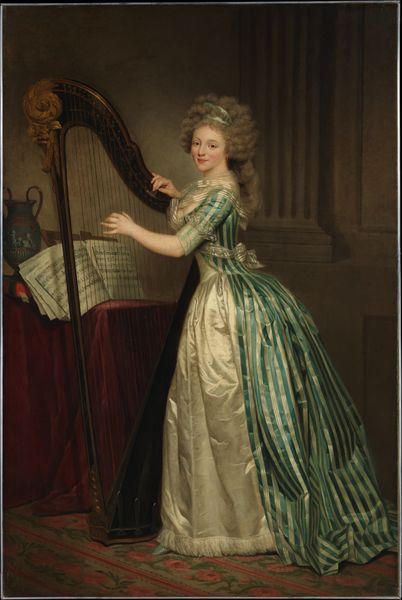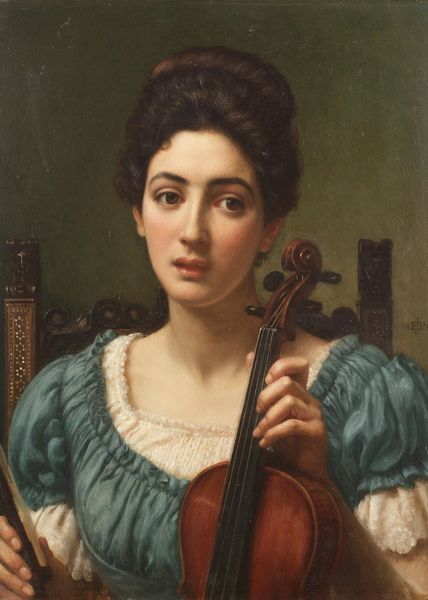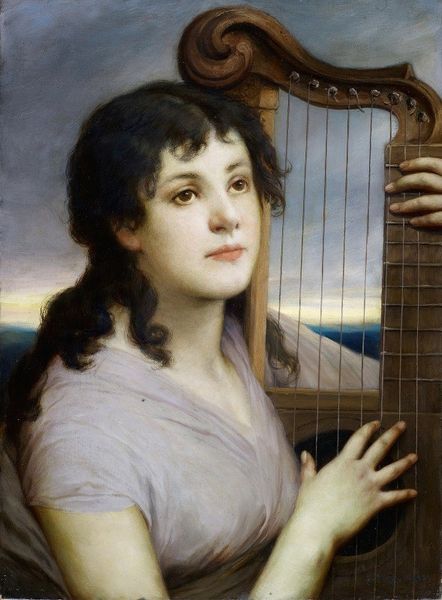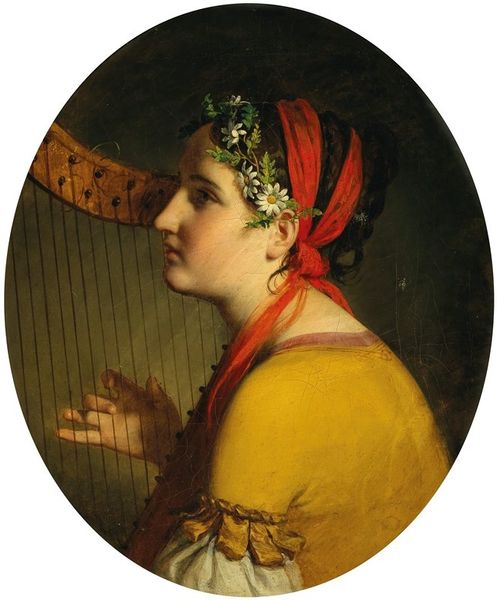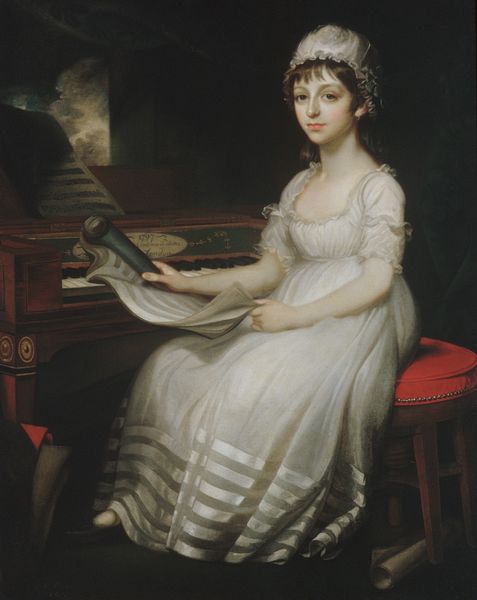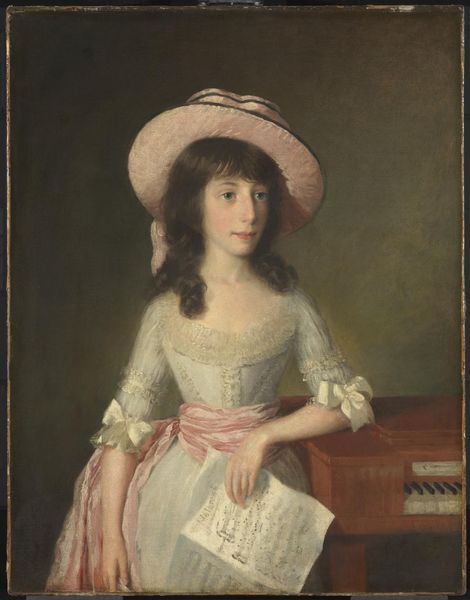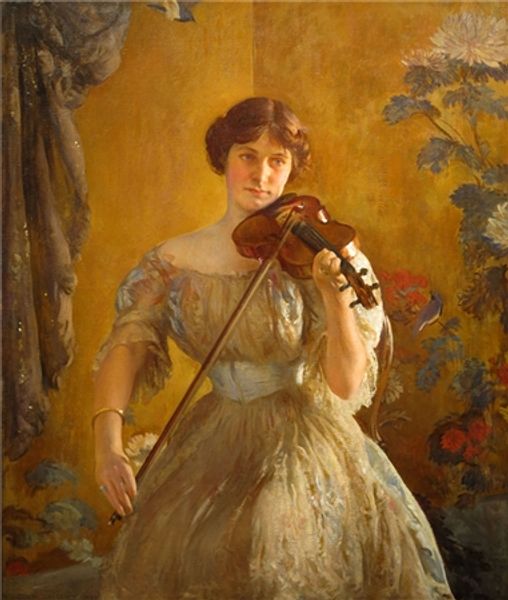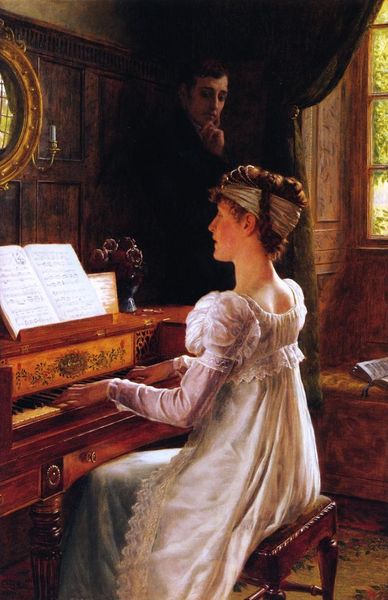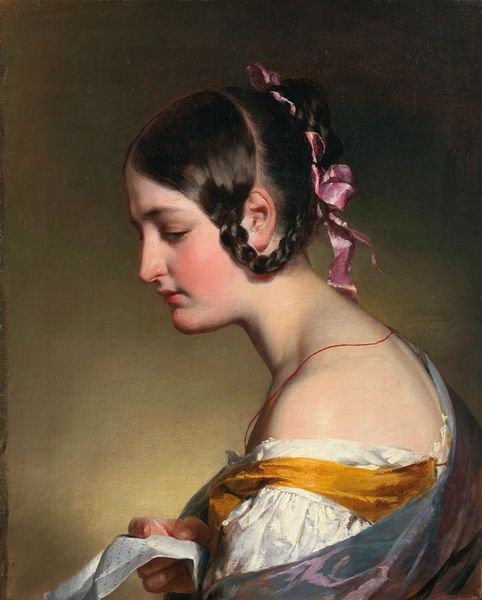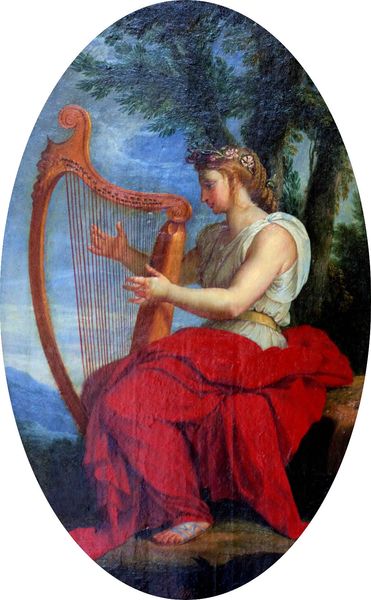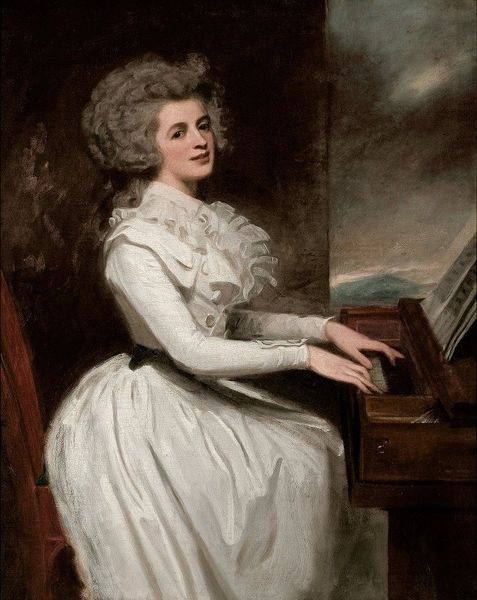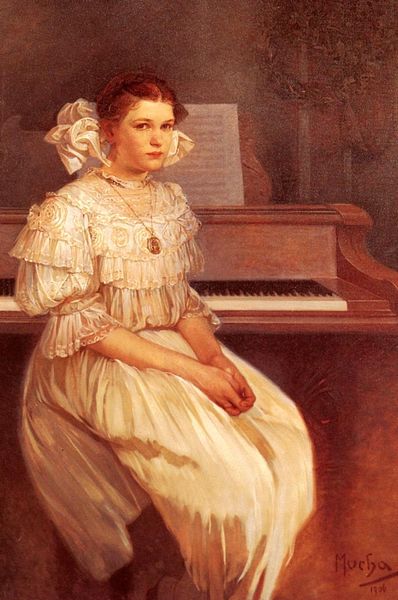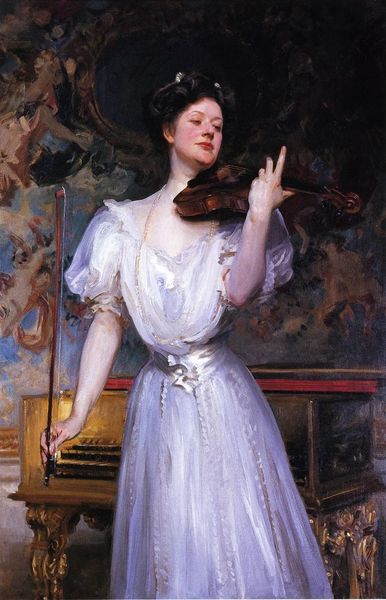
painting, oil-paint
#
portrait
#
figurative
#
character portrait
#
painting
#
oil-paint
#
figuration
#
romanticism
#
academic-art
Copyright: Public Domain: Artvee
Editor: "The Young Harpist," an oil painting by Louis Léopold Boilly, dating to the early 1800s, strikes me as quite formal. It's a character portrait. What does it say to you? Curator: It speaks volumes about the role of women and their representation in that era. This portrait is from the cusp of the 19th century, when women's social standing was intrinsically linked to accomplishments like musical talent. Think about the patronage system; artistic success often depended on the endorsement of wealthy elites who appreciated depictions of cultivated young women. The harp, then, is not just a musical instrument but a symbol of status and refined education. What sort of expectations would someone viewing this portrait have had? Editor: They would have thought that she was well-to-do and from high society. This portrait might have been used for social connections, I imagine. But it is a bit bland compared to other works from that time. Curator: Precisely. It presents an ideal rather than an individual. We might ask: What does it tell us about how female accomplishment was commodified and displayed, much like artwork, as a signifier of cultural capital? This era celebrated and even packaged idealized, sanitized notions of virtue and accomplishment. Editor: So, this painting does more than showcase a talented woman; it comments on the socio-political landscape and the role art played in reinforcing social hierarchies. Fascinating. Curator: Exactly. Next time you view a portrait, consider the forces beyond the frame shaping that image. Who commissioned it? What did they want it to project? The answers are almost always telling.
Comments
No comments
Be the first to comment and join the conversation on the ultimate creative platform.
